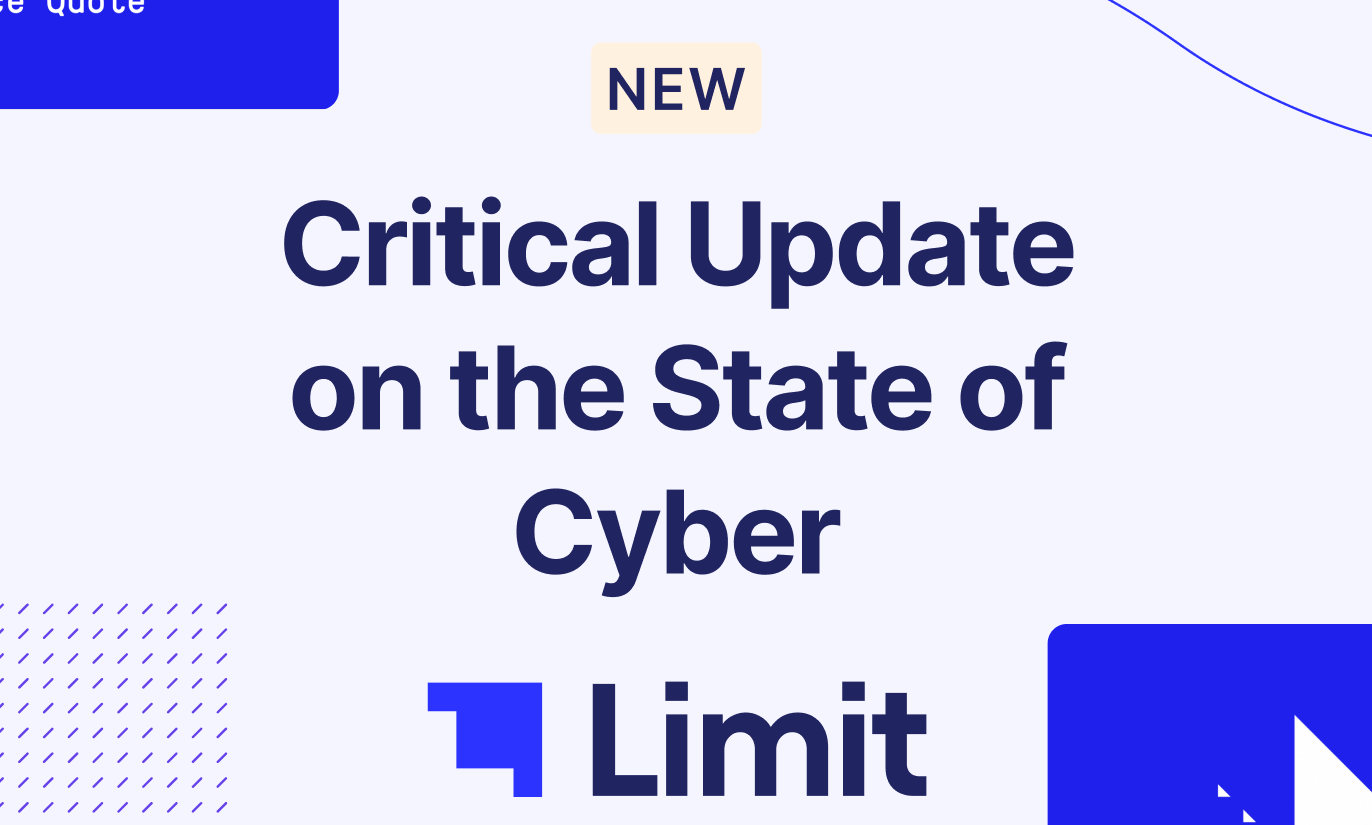A Critical Market Update: Navigating the Evolving Landscape of Cyber Risks

In our tech-driven world, cyberattacks pose a significant threat to businesses of all sizes. Cyber insurance is one of the most effective methods to mitigate the financial impact of a cyber attack. In this article, we'll explore the current world of cyber risks, the various ways cyber threats can affect your business, common cyber insurance coverages, and the cost of securing this protection.
The World of Cyber Risks
Cyber attacks are malicious attempts to compromise, disrupt, or gain unauthorized access to computer systems, networks, and the sensitive data they contain. These attacks can be perpetrated by individuals or groups with various motivations, such as financial gain or political motives.
To better understand the gravity of these risks, let’s explore some alarming statistics:
- In 2019, a staggering 43% of global cyberattacks were aimed at small and medium-sized enterprises (SMEs).
- A significant 60% of small and medium-sized enterprises (SMEs) face bankruptcy within just six months of experiencing a data breach, especially considering that these incidents come with an average total cost of $3.86 million.
- Any business that uses a computer system is at risk. Every 14 seconds, a company falls victim to a ransomware attack, which can result in financial losses that many businesses struggle to recover from. Ransomware, one of the most notorious cyber threats, incurs an average downtime cost of $141,000, marking a 200% increase from 2018.
How Hackers Compromise Systems
Hackers employ various tactics to compromise systems, and one common method is credential theft. Hackers scour the web for emails and passwords and use them to infiltrate accounts and systems. Another strategy, social attacks, often take the form of phishing schemes. Cybercriminals send spam emails designed to entice individuals into clicking on fake links, where they unwittingly surrender their credentials. Furthermore, technology vulnerabilities such as outdated software, misconfigured databases, and insecure protocols can leave systems vulnerable to external attackers. Understanding these methods is the first step to effectively defend against them.
How Cyber Risks Affect Your Business
Cyber attacks can have meaningful and far reaching impacts on businesses. As data protection regulations become more stringent, companies now face the obligation to make data breaches public and may incur fines per record lost in a breach. Beyond regulatory fines, data security liability also means vendors and customers may sue your company for data loss or being the source of an attack due to inadequate security measures. Ransomware attacks have emerged as one of the most frequent forms of cyber attacks,which entail hackers paralyzing IT systems and holding them hostage until a ransom is paid. Outside of monetary losses, company reputations are also at stake. After a cyber breach, customer and vendor trust is eroded, necessitating significant resources to rebuild it.
Common Cyber Insurance Coverages
Cyber insurance coverages encompass a range of protections that businesses can acquire to mitigate the financial and operational risks associated with cyber threats. These coverages typically include:
- Network security and cyber liability: protects the company if it is sued for losing data or causing a cyber incident for customers/vendors.
- Regulatory fines and penalties: helps defend companies if they are accused of breaching governmental regulations.
- Business interruption: covers loss of income if ransomware or surprise downtime disrupts a company's IT infrastructure and business cannot continue.
- Ransomware Payments: covers the cost of ransom and has the insurer coordinate the transfer process, avoiding issues when sending bitcoin or funds to far-off bank accounts.
- Cyber Crime and Fraudulent Payments: helps replenish money lost in a fraudulent payment or taken by an employee.
- Breach Response and Remediation Costs: covers the cost of identifying, mitigating, investigating, and recovering from a breach.
- Reputation Repair: helps cover the costs of PR and marketing to help companies rebuild customer and vendor trust.
- Experts in your Corner: As a free benefit, some insurers offer additional resources to help companies prevent, respond, and resolve cyber incidents. These include monitoring of your systems, leaked credentials, ransomware support, incident forensics, and access to security consultants who can help design response plans and actions.
These cyber insurance coverages can be tailored to a business's specific needs, helping protect against the consequences of cyber threats. To learn more about the basics of Cyber Insurance - check out our blog post here.
The Cost of Cyber Insurance
Premiums typically range between $1,750 and $3,500 per year per $1 million of coverage, making it a cost-effective investment considering the potential losses. Retentions, the amount you pay before insurance kicks in, usually hover around $5,000 to $10,000 per claim. These figures are dramatically less than the financial repercussions of an uncovered cyber incident. Cyber insurance serves as a financial safety net, allowing you to focus on your business without the constant worry of potential cyber threats.
Limit AI is here to revolutionize your workflow.
Limit has built the State of the Art AI for insurance. Limit AI will summarize and compare your quotes, run your surplus lines taxes and fee calculations, identify coverage deficiencies, and do what you need to get your job done. Limit AI is extremely well-versed in all lines of P&C and highly skilled at analyzing your policies & quotes.
Our AI Assistant is built on Limit’s years of expertise as a commercial insurance wholesaler with hands on experience in all lines of P&C. Limit AI answers questions, drafts emails, and compares quotes & policies with substantially more rigor and attention to nuance than any other competitive AI product today.
Ready to get started? Join the waitlist by visiting limit.com/ai or email us at contact@limit.com.



